#ramsgate
Text
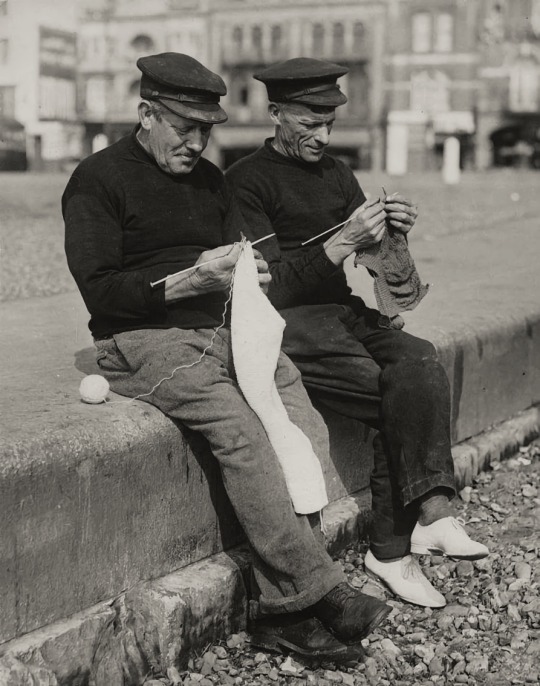
Two fishermen knit their winter woolies in Ramsgate, Kent, England, 1940s - Visual Studies Workshop/Getty Images
433 notes
·
View notes
Photo
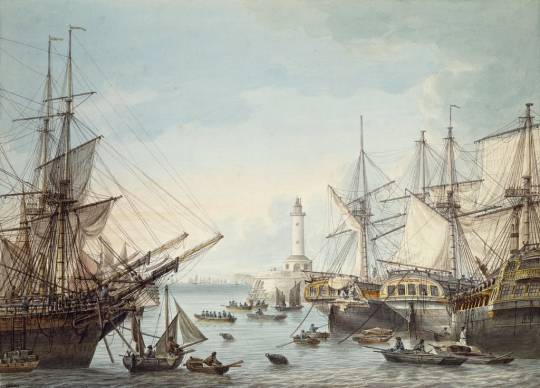
Ramsgate, by Samuel Atkins, 1805
143 notes
·
View notes
Photo

William Powell Frith - Ramsgate Sands - Life at the Seaside - 1854
Ramsgate Sands, also known as Life at the Seaside, is an oil-on-canvas painting by William Powell Frith, made from 1851 to 1854, which depicts a beach scene in Ramsgate. The painting was Frith's first great commercial success: it was exhibited at the Royal Academy summer exhibition in 1854, and bought by Queen Victoria. Frith made a series of similar pictures, showing groups of people in contemporary scenes, including The Derby Day of 1858, The Railway Station of 1862, and Private View at the Royal Academy of 1883.
Ramsgate is a seaside town in the district of Thanet in east Kent, England. It was one of the great English seaside towns of the 19th century. In 2001 it had a population of about 40,000. In 2011, according to the Census, there was a population of 40,408. Ramsgate's main attraction is its coastline, and its main industries are tourism and fishing. The town has one of the largest marinas on the English south coast, and the Port of Ramsgate provided cross-channel ferries for many years.
William Powell Frith RA (9 January 1819 – 2 November 1909) was an English painter specialising in genre subjects and panoramic narrative works of life in the Victorian era. He was elected to the Royal Academy in 1853, presenting The Sleeping Model as his Diploma work. He has been described as the "greatest British painter of the social scene since Hogarth".
14 notes
·
View notes
Audio
Acetate by METZ from the Live at Ramsgate Music Hall EP
#somethingneweveryday#music#canadian music#live music#live#metz#hayden menzies#alex edkins#chris slorach#judicael brun#ramsgate#ramsgate music hall
11 notes
·
View notes
Photo

THANET 4EVER
East Cliff, Ramsgate
39 notes
·
View notes
Text
The (nearly) forgotten Whitstable Diver.
John Deane and his brother had a chance to try out an invention when the Bear and Key public house, caught fire.
On previous tests they had designed a makeshift-helmet, made from a suit of armour, with an air-pipe attached to a bellows. Several horses were trapped in the High Street, Whitstable pub, and using the new device John Deane walked through the smoke, saving all the coaching house horses.
John sold the smoke-mask patent, number 4869 to his employer for £417.

picture: The Bear and Key, right.
The successful rescue, gave the brothers an idea to develop the helmet for use, under water. They continued, what was now termed *diving equipment* in 1829, by working on the Carn Brea Castle. John and Charles Deane worked together on the wreck of the Royal George, during which John discovered the wreck of the Mary Rose.

picture: An early Deane diving helmet.
John Deane’s family, lived in a white-boarded cottage on Island Wall, the property was called Free Diver Cottage, but is now known as, The Crab and Winkle. On the front outside wall Canterbury City Council have installed, a blue plaque, noting that:
< John Deane 1800–1884. The Co-inventor of diving equipment and the diving helmet, lived here 1848–1854.>
The cottage which has changed little over the years, and is now, in great demand as a holiday rental property.

picture: John Deane’s cottage in Whitstable. Copyright: Mike Gunnill
During the Great Exhibition of 1851 several officials from The Admiralty viewed and inspected Deane’s ‘new’ diving equipment, along with his demonstrations held in a large glass fronted water tank. The men from the Admiralty would later seek John Deane out, needing help during the Crimean War, between October 1853 and February 1856.

picture: Deane’s warehouse in Whitstable.
John Deane with his family were living at 65 Island Wall, the home of the Browning family, when he was approached by the Surveyor of the Navy 1848–1861, Admiral Sir Baldwin Walker 1802–1876 on the 16th October, 1854.
Two days later, after negotiations, Deane signed a diving-contract, for one guinea a day, plus all board and lodging and if successful, a gratuity of £200 at the end of his work. As a matter of urgency, the Admiralty wanted him to take a team of four experienced civilian divers to the Crimean War. Not only did the country require John Deane for his diving skills, but also for his knowledge of using explosives under water.
The Russians had shuttled several ships at Sebastopol/Savastopol blocking the harbour. Somehow these vessels, had to cleared as the Crimean War was going badly for the British. His diving experience would be tested, as the plan involved placing specially made 1000 lb explosive devices on the underwater hazards. Sailing with him was friend, diving partner 1834–1855 and business partner William Edwards. The pair left Portsmouth on Sunday, the 26th of November, 1854 on board the ship, The Robert Lowe with the bomb cylinders and diving equipment.
Extra diving equipment was also loaded on to the store ship, HMS Prince which was making the same voyage. On board this vessel were two other divers, James Rigden and George Allen, both were well known Whitstable men.
Soon after arriving off Balaklava in November 1854, HMS Prince sank with the loss of 154 men, including the two Whitstable divers, Rigden and Allen. All the extra diving equipment was also lost, along with the main ship’s cargo, much needed winter grey coats, undergarments, socks and boots, for 40,000 British troops.
Deane and Edwards on their arrival, had the unpleasant task of diving on the ship, to see what could be recovered from the wreck.
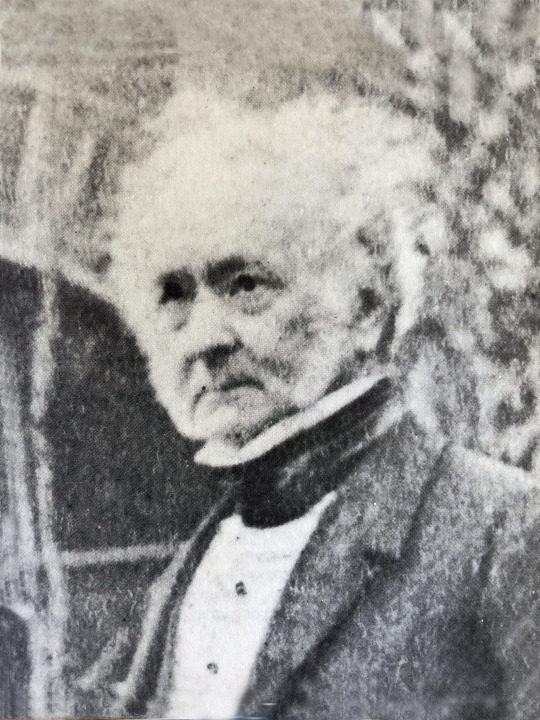
picture: John Deane. Copyright Cambridge Library.
The Robert Lowe stopped in Malta and then finally arrived at Scutari, in Turkey. The Selimiye Barracks, were allocated as the main British Army barracks for the war. The barracks became a temporary military hospital, where in November 1854 Florence Nightingale arrived with 37 volunteer nurses, staying until 1857.
John Deane had to find replacement divers, for the those lost when HMS Prince sank. He wrote to his friend, James Bell a diver from East Street, Herne Bay to find three other men and to travel to join him. It is thought one of the new crew included William Bell, the son of James who now lived on Marine Parade, Herne Bay and was an old business partner of John Deane’s. The replacement team and diving equipment left Portsmouth in January 1855.
On the 23rd of May, 1855; Whitstable man, William Edwards left the main diving party on a secret mission to Kerch. Located further along the coast, it guarded a narrow passage-way into the Sea of Azov, which was blocked by shuttled Russian ships.
The clearance plans were a great success but not without the loss of William Edwards. During the final weeks of blowing up two Russian naval ships, Edwards contracted cholera and was transferred to a hospital ship, thought to be HMS Belleisie. William Edwards was born in High Street, close to Queenborough Harbour, the Isle of Sheppey, on the 27th of January, 1801. He was a married man with a daughter from his previous marriage, and a Master Mariner. William Edwards died on board the hospital ship in Kerch Bay on the 31st of August, 1855. He was buried in a British cemetery within the grounds of Fort Saint Paul, Kerch.
John Deane took the news of William Edward’s death very hard. He had been a friend-business partner for 25 years, and during the journey to the Crimea a constant companion. Deane wrote to his second wife, Mrs Sarah Edwards and daughter Ann, to break the news of her husband’s death. The letter dated, the 2nd September, was received two months later in Whitstable.
The Edward’s old home, by this time, had been converted into The Lower Hope beer house. Which, after renumbering, is at number 9 High Street in Whitstable.
Today in Sebastopol or Kerch, there are no British cemeteries or neat rows of graves for the war dead, like other British conflicts. Just after troops and naval personel left the Crimea, many of the graves were desecrated, opened and plundered. By 1900 there were few British cemeteries left, and those that remained were bulldozed and cleared in the late 1950’s under order from Nikita Khrushchev, the soviet premier.
John Deane continued his clearance work around Sebastopol harbour, which included defusing several mine-fields. The Russians had laid a series of wired mines in the main channel, which all had to be cleared by hand.
In January 1856, Deane wrote to Sarah Ann Browning back in Whitstable, mentioning his diving duties. “We are getting on really well with the destruction of the Docks. Frequently using several thousand pounds of gunpowder, every day. The havoc, as you can imagine, is frightfully grand.”
John Deane was officially discharged from Government service on the 10th of July, 1855 but stayed on, to help and assist the Royal Engineers. It was in June of 1856 that Deane and his other two Whitstable divers finally left Balaclava harbour on board the Robert Lowe, arriving in Portsmouth on August 4th.
Deane returned to Whitstable as a hero and a local celebrity in 1856. His exploits had been reported extensively in The Times newspaper by William Howard Russell, who had nicknamed Deane “The Infernal Diver.” More importantly after two years he was reunited with his children. son Edmund, and daughters Agnes, Caroline and Susannah. John was keen to see Sarah Browning who had managed his business affairs and corresponded with him, sometimes in a private secret code. Their relationship naturally developed and within a short time, they were married in Whitstable.

picture: Sarah Ann Browning.
He retired from the diving industry soon after returning from the war. Deane was a modest, quiet man and he told anyone that asked that, “He had done enough.”
Two of the captured cannons from Sebastopol followed Deane back to Kent. Others were distributed across the Empire and major towns in the United Kingdom. One cannon was presented to the people of Maidstone, in 1858. Number 24386 and sits at Lower High Street pointing towards the River Medway. Not to be out-done by the county town, Rochester asked if they could have a cannon as well! It was duly presented in 1859, again by Lord Panmure. In 1899 it was sited to Rochester Castle Gardens, where it has remained ever since providing a useful climbing frame for children of all ages.
Several years after returning from the Crimean War, the Admiralty after much stalling finally paid John Deane, the balance of funds owing to him. This totalled, £1,471. 18s.
Mr and Mrs John Deane lived in Whitstable and then, for a short time in Ramsgate. Sarah Ann Deane died in November 1865, aged 36 years old and her body was transported back to Whitstable for burial.
John Deane married, 43-year-old Ruth Norris in 1868 at Saint Peters Church in Hackney. After a short time living in Whitstable, the couple moved to Ramsgate. About 5 years after marriage, while living in Ramsgate, John Deane had his photograph taken.

picture: Deane and his wife, Ruth at their Ramsgate home. Copyright Cambridge Library.
Their home, was a four-storey terrace property, at Number 90 Hardes Street, which stands today and was owned by the Deane family from 1871 until 1896.

picture: Hardes Street, Ramsgate. Copyright: Mike Gunnill
John Deane, aged 84 years, was buried on the 12th of July,1884 in plot 342 in Ramsgate Cemetery. The large grave holds several family members and can be found in the old section of the cemetery, grave number; HB 342.

picture: John Deane’s grave, Ramsgate. Copyright: Mike Gunnill
Considering the invention of the diving helmet and the impact diving had on Whitstable industry, there are few reminders of the Deane Brothers, in the town. Even less is remembered of William Edwards, who played an important part in the development of diving and the use of explosive materials underwater. His work in the Crimea, with that of John Deane was heroic and helped shorten the conflict.
What does remain in Whitstable, is John Deane’s cottage and a strange modern sculpture, featuring the diver. The sculpture by Paul Richardson, was unveiled in 1995. Commissioned by Canterbury City Council to “reflect local heritage.” You can find it, in the centre of the car park of Whitstable swimming pool.
John Deane 1800–1884 is sadly, largely forgotten in Whitstable and Kent - which is a shame! There was no better diver or underwater explosive expert in his life time.
© mikegunnill 2023.
#Deane#Whitstable#Ramsgate#Mary Rose#diving#Canterbury City Council#Crimea#William Edwards#The Stag#Bear and Key
6 notes
·
View notes
Text

Ramsgate
Southern Railway
~ Leonard Richmond (British, 1889-1965), circa 1936
4 notes
·
View notes
Text
Currently FREE on Kindle … but only until Friday!

#books#shadowoftheshapeshifter#call of cthulhu#discworld#dnd#fighting fantasy#ramsgate#thanet#80s#book#comic#comics#davidleestone#dungeons and dragons#dungeons and drawings#fantasy rpg group#fantasybooks#funny#hilarious#roleplaying
5 notes
·
View notes
Photo
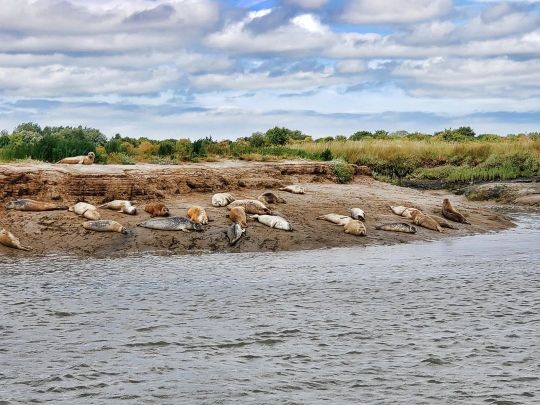
#seals #greyseals #visitkent #englishcoast #britishsummer #Britishwildlife #UK 🇬🇧 #ramsgate #nature #wildlife #animals (at Pegwell Bay) https://www.instagram.com/p/Cg6zM_WKLuk/?igshid=NGJjMDIxMWI=
#seals#greyseals#visitkent#englishcoast#britishsummer#britishwildlife#uk#ramsgate#nature#wildlife#animals
2 notes
·
View notes
Photo

I just got these marine VHF radios charged, so I can drop them around to the organisers of Ramsgate Week tonight. Just one of the things we are doing to support this very friendly, historic annual regatta. For more details about our involvement, visit: https://icomuk.co.uk/Icom-UK-Official-Radio-Communications-Supplier-to-Ramsgate-Week/2/210/
2 notes
·
View notes
Text
Come along for a great day

2 notes
·
View notes
Photo

🔸Mother and her 2 children posing by the Royal harbour Crosswall 🔸Mother and her 2 children posing by the Royal harbour Ramsgate #blackandwhitephoto #oldphoto #goodolddays #nostalgia #victorian #retro #victorianchap #ramsgate #edwardian #harbour #monochrome #streetscene #1900s Ramsgate, England, photographed by Francis Frith circa 1907 #oldphoto #goodolddays #nostalgia #pastlives #retro #victorianchaps #ramsgate #edwardian #harbour #monochrome #streetscene #1900s #history #kent (at Ramsgate Harbour wall) https://www.instagram.com/p/CdJnB_ojg3N/?igshid=NGJjMDIxMWI=
#blackandwhitephoto#oldphoto#goodolddays#nostalgia#victorian#retro#victorianchap#ramsgate#edwardian#harbour#monochrome#streetscene#1900s#pastlives#victorianchaps#history#kent
4 notes
·
View notes
Text
Best Chicken 65 at Royal Bait-al-Mandi Ramsgate In Sydney, Australia.
🐔 You will love the delicious taste of our Chicken 65 at Royal Bait-al-Mandi Ramsgate.
✔ Come try it today!
Order Online or Visit us:
☎️: 02 8378 7678
🌐: www.royalmandi.com.au
Visit Us : 193 - 195 Rocky Point Road, Ramsgate, NSW 2217

#arabicmandi#fishmandi#chickenmandi#lambmandi#restaurantsinsydney#hyderabadimandi#mandiinsydney#royalbaitalmandi#biryani#bestmandirestaurant#lambbiryani#chickenbiryani#kebabs#mixedplate#RoyalIsBack#OurDoorsAreOpen#discount#sydneysBestMandi#bestbiryani#halalCertifiedRestaurant#ramsgate#chicken65
0 notes
Text
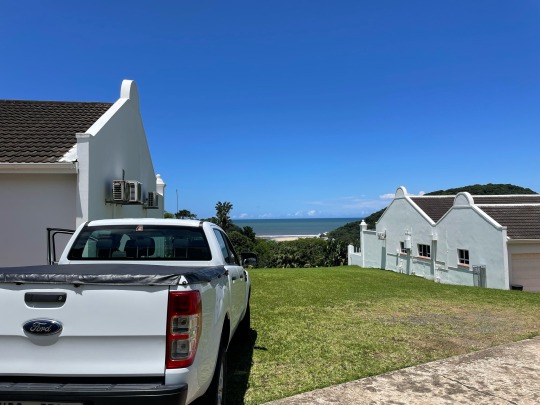
1 note
·
View note
Text
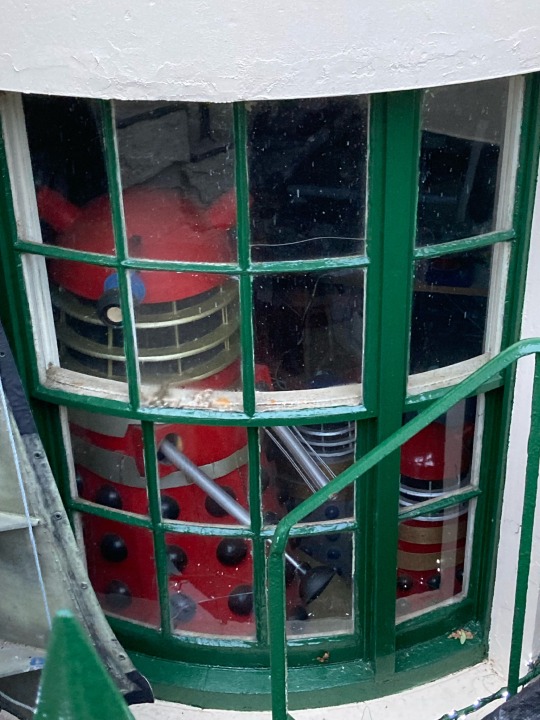
Saw these shifty sods hiding out in Ramsgate.
1 note
·
View note
